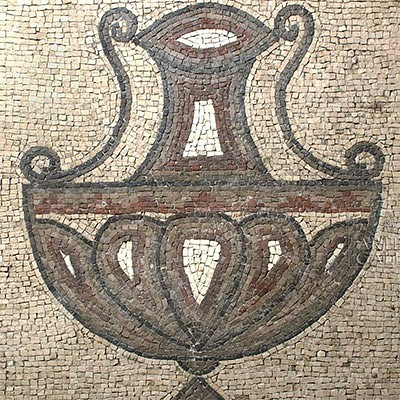Old Babylonian Clay Cuneiform Letter from Atanah-ili
Lot 102
About Seller
Artemis Fine Arts
686 S Taylor Ave, Ste 106
Louisville, CO 80027
United States
Selling antiquities, ancient and ethnographic art online since 1993, Artemis Gallery specializes in Classical Antiquities (Egyptian, Greek, Roman, Near Eastern), Asian, Pre-Columbian, African / Tribal / Oceanographic art. Our extensive inventory includes pottery, stone, metal, wood, glass and textil...Read more
Categories
Estimate:
$900 - $1,200
Absentee vs Live bid
Two ways to bid:
- Leave a max absentee bid and the platform will bid on your behalf up to your maximum bid during the live auction.
- Bid live during the auction and your bids will be submitted real-time to the auctioneer.
Bid Increments
| Price | Bid Increment |
|---|---|
| $0 | $25 |
| $300 | $50 |
| $1,000 | $100 |
| $2,000 | $250 |
| $5,000 | $500 |
| $10,000 | $1,000 |
| $20,000 | $2,500 |
| $50,000 | $5,000 |
| $100,000 | $10,000 |
| $200,000 | $20,000 |
About Auction
By Artemis Fine Arts
Sep 22, 2020
Set Reminder
2020-09-22 12:00:00
2020-09-22 12:00:00
America/New_York
Bidsquare
Bidsquare : Antiquities - Egypt, Greece, Italy, Near East
https://www.bidsquare.com/auctions/artemis-gallery/antiquities---egypt-greece-italy-near-east-5663
Featuring Egyptian, Greek, Roman, Etruscan & Near Eastern art. If you love the classics, this is the sale for you. All artifacts offered for sale have been legally acquired, are legal to sell and are guaranteed to be as described. In-house shipping for your convenience. Artemis Fine Arts info@artemisfinearts.com
Featuring Egyptian, Greek, Roman, Etruscan & Near Eastern art. If you love the classics, this is the sale for you. All artifacts offered for sale have been legally acquired, are legal to sell and are guaranteed to be as described. In-house shipping for your convenience. Artemis Fine Arts info@artemisfinearts.com
- Lot Description
Ancient Near East, Mesopotamia, Old Babylonian Period, reign of Rim-Sin I, ca. 1822 to 1763 BCE. A large, hand-built clay tablet, rectangular in form with rounded sides and planar top and bottom faces, containing a letter from a person named "Atanah-ili" to another individual. The letter contains twenty-six lines of cuneiform text, formed by impressing a sharpened reed or wooden stick into the still-wet clay prior to the kiln-firing process. The tops and bottoms of the letter do not contain any text, and there is a small blank area near the bottom of the document. Cuneiform was generally a pictographic style of writing in its infancy, though it became a more abstract style of letter-based script around the 3rd millennium BCE. Lucite display stand for photography purposes only. Size: 1.875" W x 4.6" H (4.8 cm x 11.7 cm).
While the name of the individual has been identified as Atanah-ili, the subject matter and remainder of the letter has not been translated. However, we know Atanah-ili to have been an individual of purported significance. Babylonian scholar and writer W. F. Leemans describes how Atanah-ili was, through multiple documents, "an individual repeatedly mentioned in the archives of Istar-ili and Idin-Amurrum…" ("The Old-Babylonian Merchant: His Business and His Social Position." Studia Et Documenta, Vol. III, E. J. Brill, Leiden, Holland, 1950, p. 57).
Provenance: private East Coast, USA collection, private Dere Family collection acquired in the 1990s.
All items legal to buy/sell under U.S. Statute covering cultural patrimony Code 2600, CHAPTER 14, and are guaranteed to be as described or your money back.
A Certificate of Authenticity will accompany all winning bids.
We ship worldwide and handle all shipping in-house for your convenience.
#132506Repaired from multiple pieces with some small chips and light adhesive residue along break lines. Surface wear and abrasions commensurate with age, small chips to top, bottom, and both sides, and light fading to some impressed letters. Light earthen deposits within recessed areas.Condition
- Shipping Info
-
All shipping is handled in-house for your convenience. Your invoice from Artemis Gallery will include shipping calculation instructions. If in doubt, please inquire BEFORE bidding for estimated shipping costs for individual items.
-
- Buyer's Premium



 EUR
EUR CAD
CAD AUD
AUD GBP
GBP MXN
MXN HKD
HKD CNY
CNY MYR
MYR SEK
SEK SGD
SGD CHF
CHF THB
THB
















